The syllabic structure in English Theories on syllable

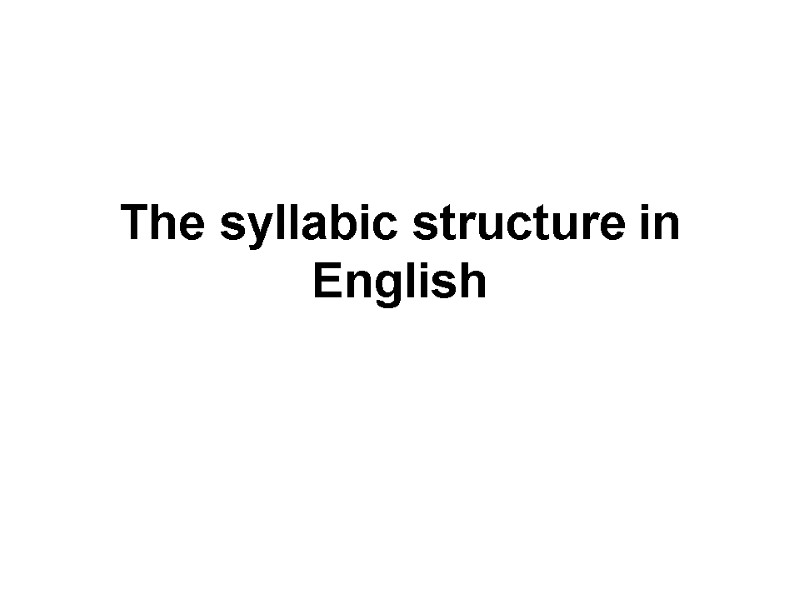
The syllabic structure in English

Theories on syllable formation and division
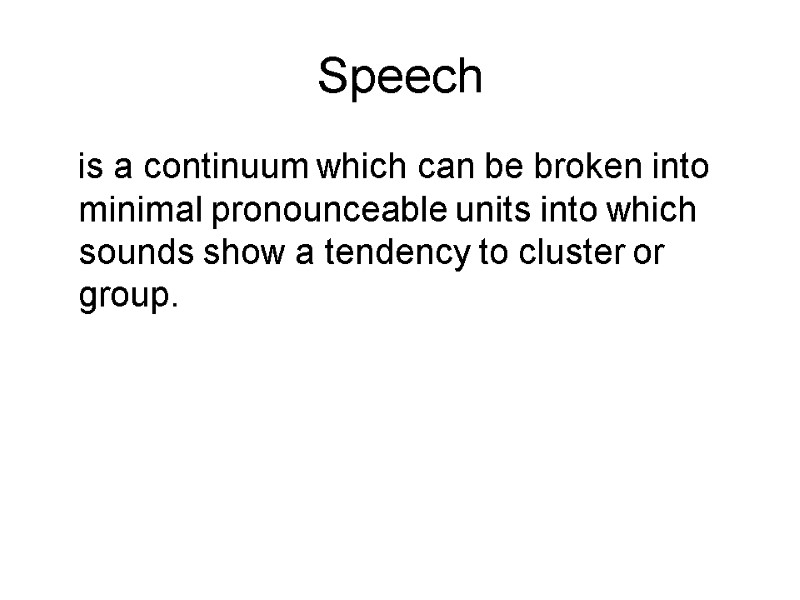
Speech is a continuum which can be broken into minimal pronounceable units into which sounds show a tendency to cluster or group.
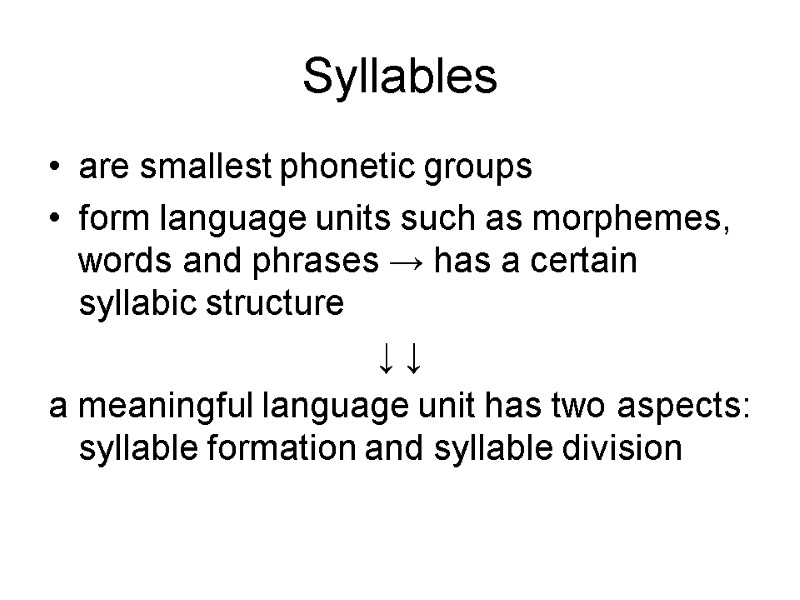
Syllables are smallest phonetic groups form language units such as morphemes, words and phrases → has a certain syllabic structure ↓ ↓ a meaningful language unit has two aspects: syllable formation and syllable division
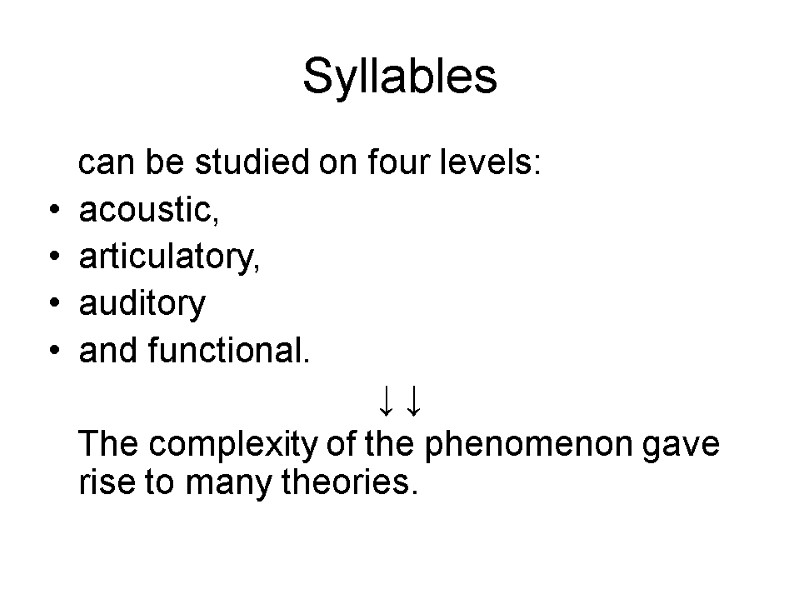
Syllables can be studied on four levels: acoustic, articulatory, auditory and functional. ↓ ↓ The complexity of the phenomenon gave rise to many theories.
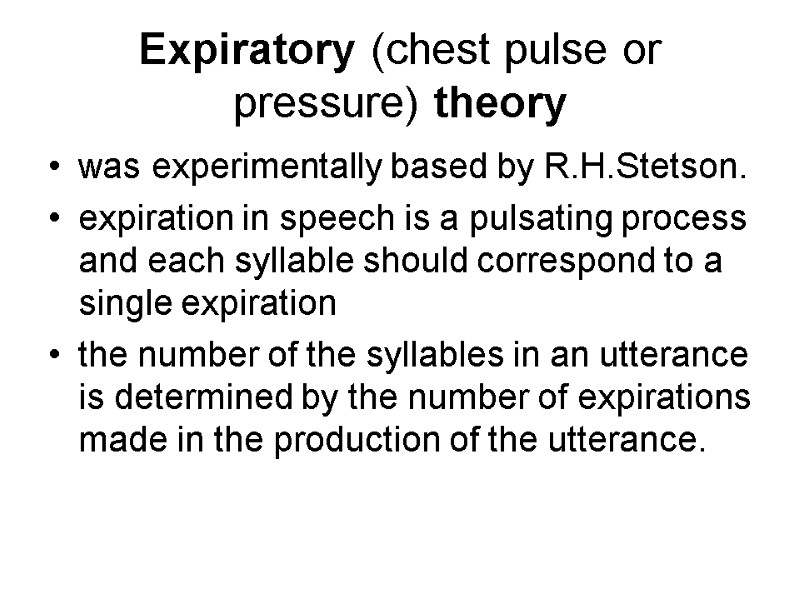
Expiratory (chest pulse or pressure) theory was experimentally based by R.H.Stetson. expiration in speech is a pulsating process and each syllable should correspond to a single expiration the number of the syllables in an utterance is determined by the number of expirations made in the production of the utterance.
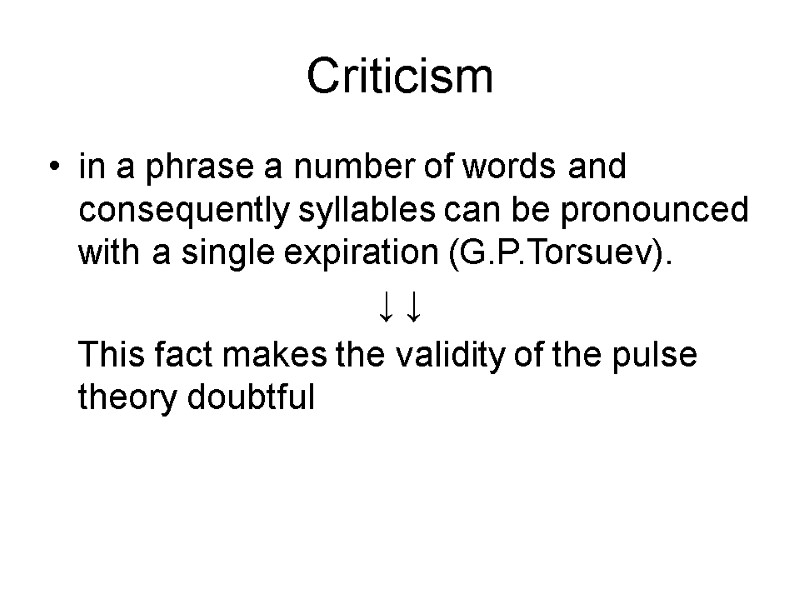
Criticism in a phrase a number of words and consequently syllables can be pronounced with a single expiration (G.P.Torsuev). ↓ ↓ This fact makes the validity of the pulse theory doubtful
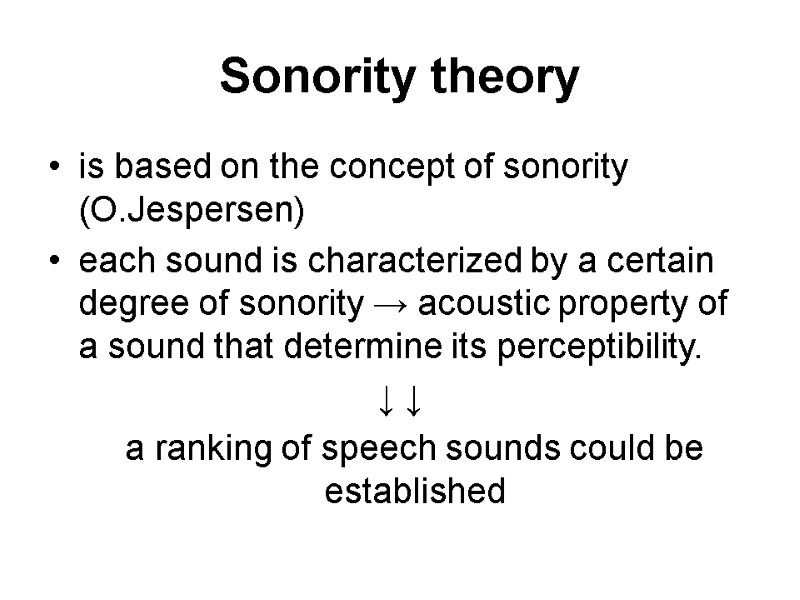
Sonority theory is based on the concept of sonority (O.Jespersen) each sound is characterized by a certain degree of sonority → acoustic property of a sound that determine its perceptibility. ↓ ↓ a ranking of speech sounds could be established

Sonority theory open vowels

For example, we may use the following wave of sonority in the word plant ⁄ • \ p l a: n t
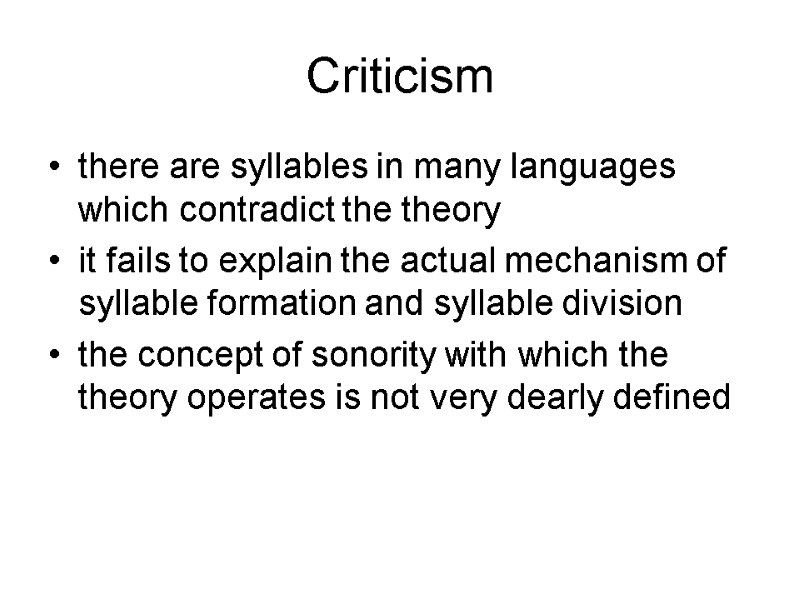
Criticism there are syllables in many languages which contradict the theory it fails to explain the actual mechanism of syllable formation and syllable division the concept of sonority with which the theory operates is not very dearly defined
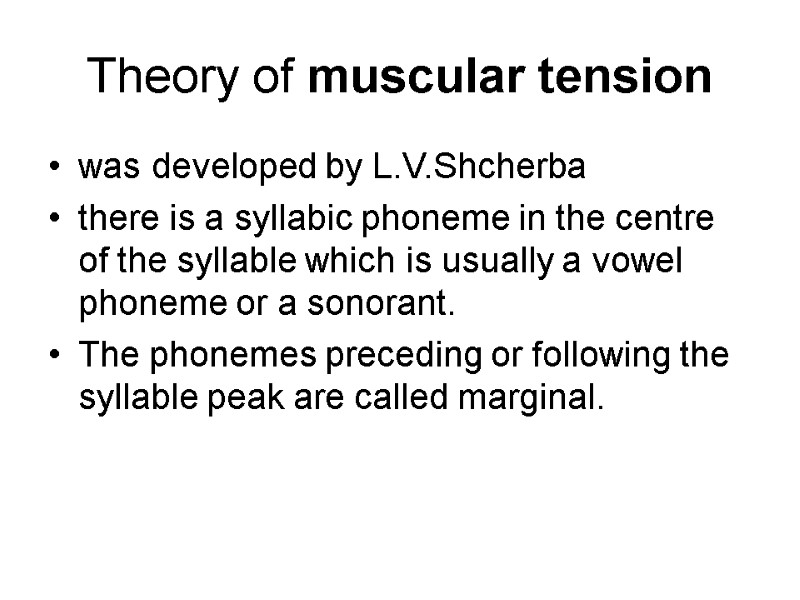
Theory of muscular tension was developed by L.V.Shcherba there is a syllabic phoneme in the centre of the syllable which is usually a vowel phoneme or a sonorant. The phonemes preceding or following the syllable peak are called marginal.
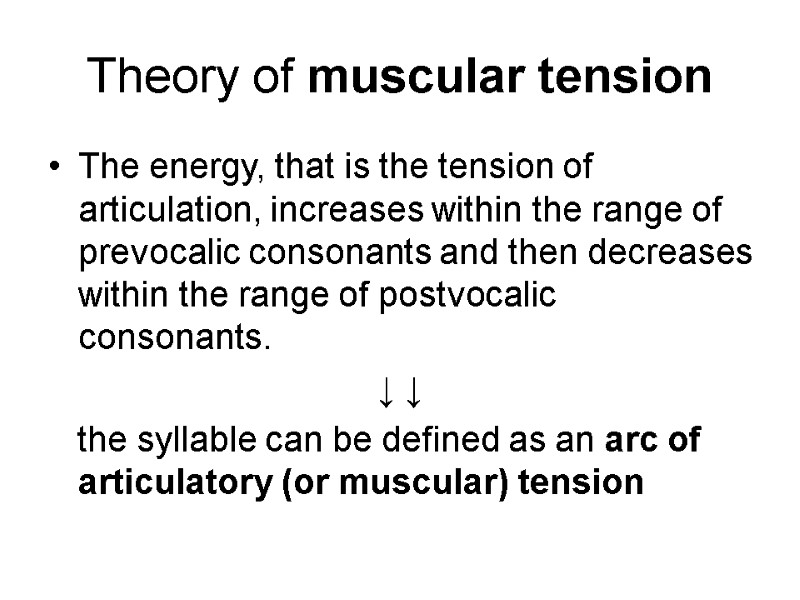
Theory of muscular tension The energy, that is the tension of articulation, increases within the range of prevocalic consonants and then decreases within the range of postvocalic consonants. ↓ ↓ the syllable can be defined as an arc of articulatory (or muscular) tension
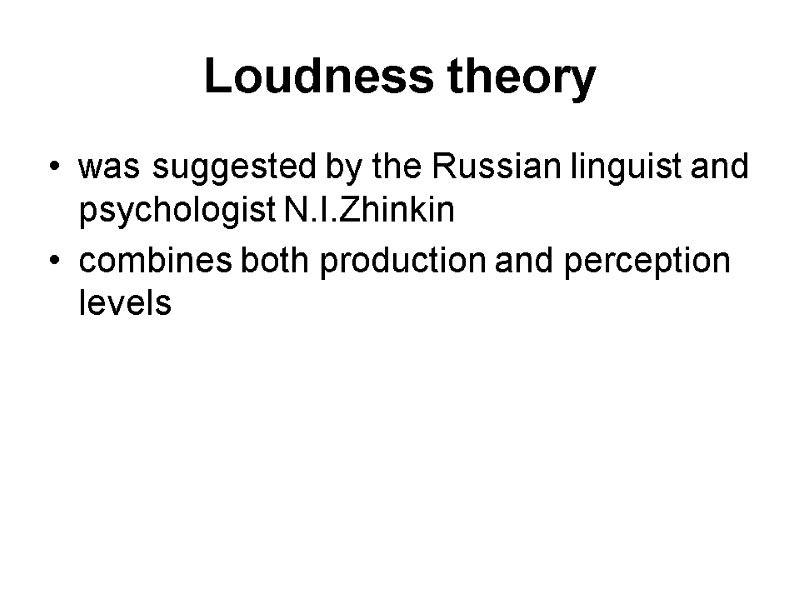
Loudness theory was suggested by the Russian linguist and psychologist N.I.Zhinkin combines both production and perception levels
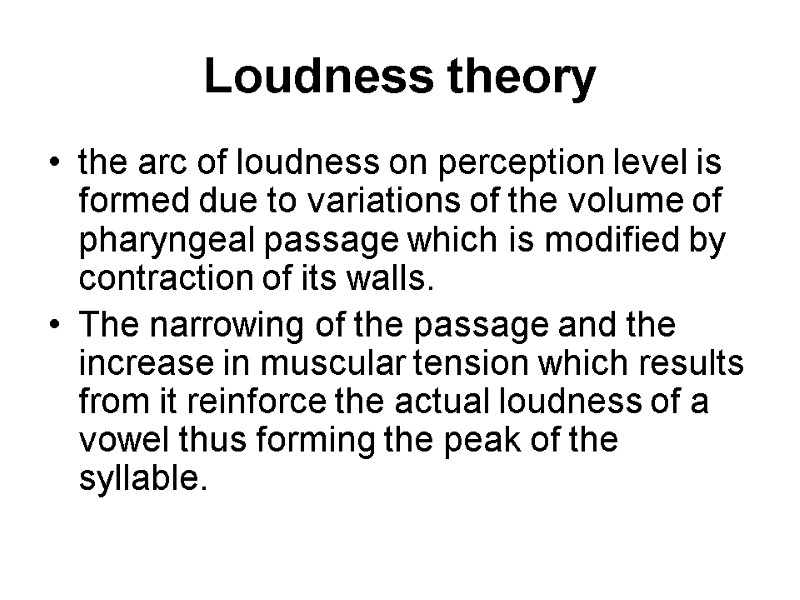
Loudness theory the arc of loudness on perception level is formed due to variations of the volume of pharyngeal passage which is modified by contraction of its walls. The narrowing of the passage and the increase in muscular tension which results from it reinforce the actual loudness of a vowel thus forming the peak of the syllable.
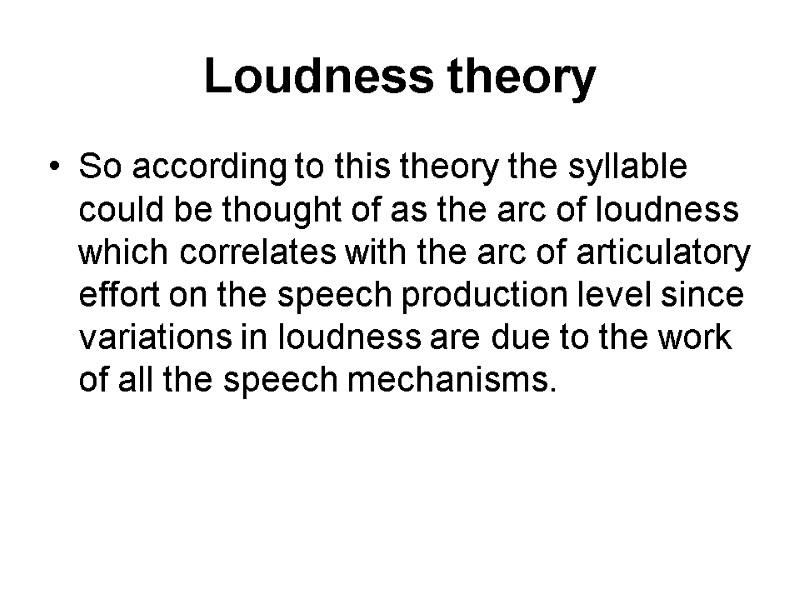
Loudness theory So according to this theory the syllable could be thought of as the arc of loudness which correlates with the arc of articulatory effort on the speech production level since variations in loudness are due to the work of all the speech mechanisms.
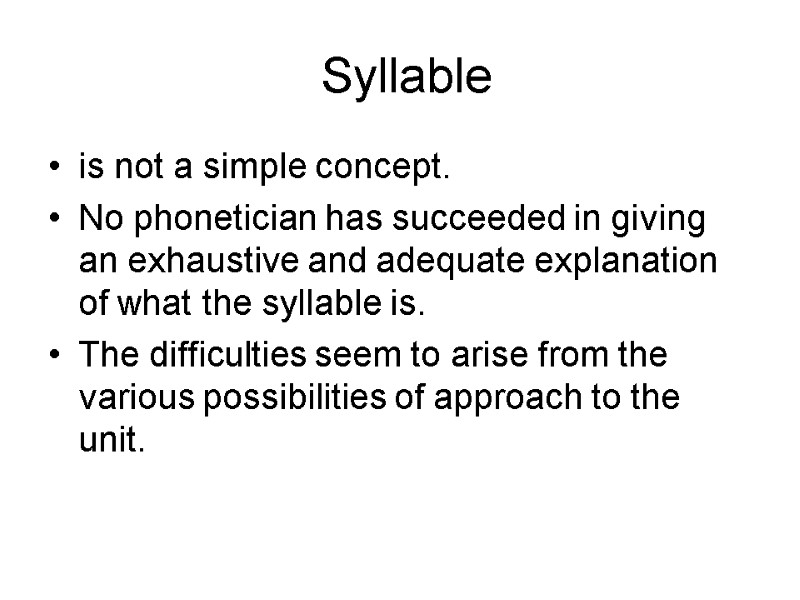
Syllable is not a simple concept. No phonetician has succeeded in giving an exhaustive and adequate explanation of what the syllable is. The difficulties seem to arise from the various possibilities of approach to the unit.
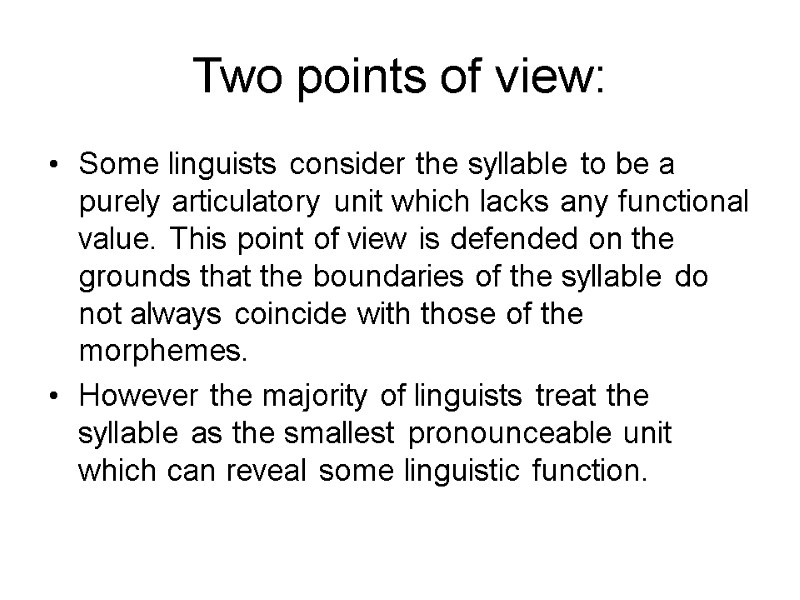
Two points of view: Some linguists consider the syllable to be a purely articulatory unit which lacks any functional value. This point of view is defended on the grounds that the boundaries of the syllable do not always coincide with those of the morphemes. However the majority of linguists treat the syllable as the smallest pronounceable unit which can reveal some linguistic function.
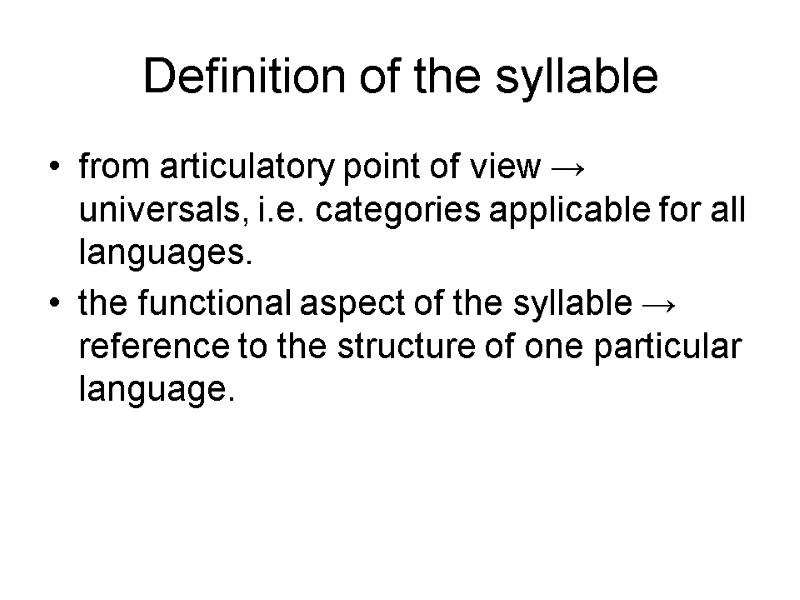
Definition of the syllable from articulatory point of view → universals, i.e. categories applicable for all languages. the functional aspect of the syllable → reference to the structure of one particular language.
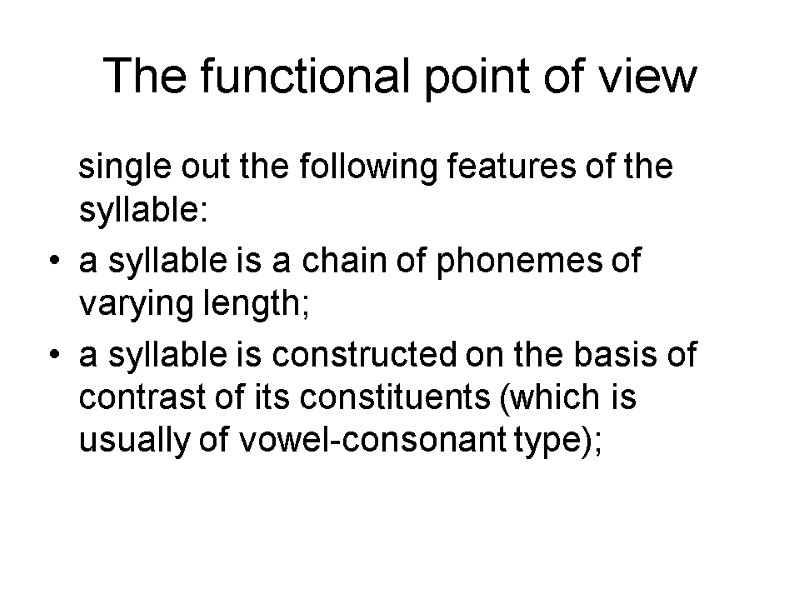
The functional point of view single out the following features of the syllable: a syllable is a chain of phonemes of varying length; a syllable is constructed on the basis of contrast of its constituents (which is usually of vowel-consonant type);
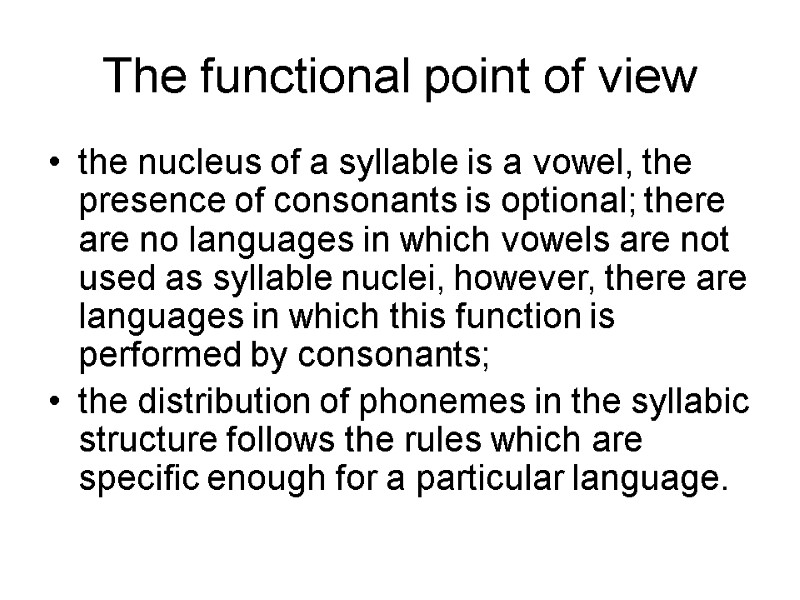
The functional point of view the nucleus of a syllable is a vowel, the presence of consonants is optional; there are no languages in which vowels are not used as syllable nuclei, however, there are languages in which this function is performed by consonants; the distribution of phonemes in the syllabic structure follows the rules which are specific enough for a particular language.
8142-10_the_syllabic_structure_in_english.ppt
- Количество слайдов: 21

